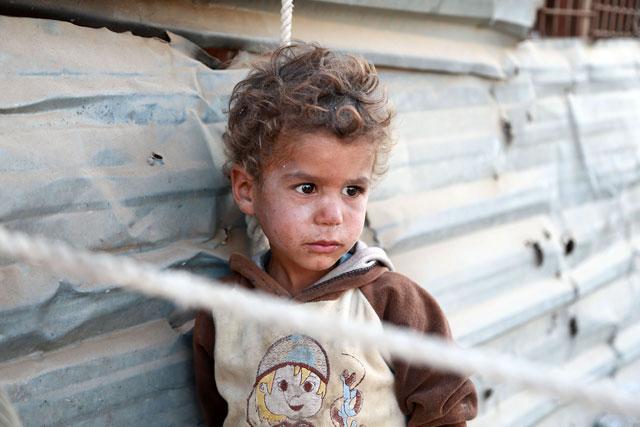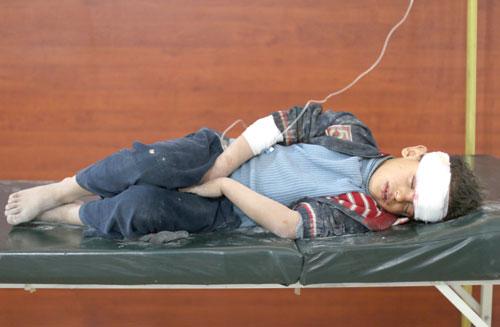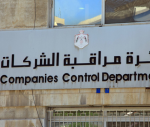You are here
Aid enters besieged Syria region hit by hunger crisis
By AFP - Oct 30,2017 - Last updated at Oct 30,2017

DAMASCUS — Dozens of trucks carrying aid for 40,000 people on Monday entered the besieged rebel-held Eastern Ghouta area near Damascus, where residents and relief groups have warned a humanitarian crisis is escalating.
Shocking AFP images from the region earlier this month showed severely underweight children, and doctors reported two infants had died of malnutrition and related complications.
The United Nations and the Syrian Arab Red Crescent (SARC) said a joint aid convoy had entered Eastern Ghouta on Monday, carrying food and medical supplies.
“We entered Eastern Ghouta... we are planning on delivering aid to Kafr Batna and Saqba today for 40,000 [people],” said Linda Tom, spokeswoman for the UN’s humanitarian coordination agency, OCHA.
The joint UN-Syrian Arab Red Crescent convoy included 49 trucks carrying “eight thousand food parcels and a similar number of bags of flour, medicine, medical supplies, and other nutritional materials,” Red Crescent spokeswoman Mona Kurdi said.
The aid will be distributed across several districts including Hamouria, Ain Tarma, Kafr Batna and Saqba, SARC said.
Eastern Ghouta was once a prime agricultural region famed for its orchards.
But the rebel stronghold has been under a tight government siege since 2013, causing shortages of food and medicine.
That pushed up prices for whatever supplies could be produced locally or smuggled in.
The region has been devastated by years of fighting, with government air strikes and shelling bringing down multi-storey buildings and rendering whole streets uninhabitable.
Basic services for the region’s estimated 400,000 residents are virtually non-existent, with electricity produced only by generators and the available water often dirty and a vector for disease.
Aid has entered the area only sporadically, and convoys have generally only been able to deliver food and medical supplies that fall far short of the region’s needs.
Until Monday, just two convoys had entered Eastern Ghouta since August, carrying supplies for fewer than 100,000 people.
Aid can only enter the area with permission from Damascus, which has often proved difficult to secure.
That has continued to be the case despite the implementation in July of a “de-escalation zone” agreed by rebel backer Turkey and government allies Russia and Iran.
The agreement has reduced violence in the area, but there has been little uptick in aid deliveries.
Last week, the International Committee of the Red Cross warned that humanitarian needs in Eastern Ghouta were “huge” and that the “situation is getting worse”.
“We know from past experience that such situations, where the population depends on the provision of humanitarian aid for its very basic needs, can deteriorate very quickly, and reach tragic proportions,” said ICRC spokeswoman Ingy Sedky.
The UN said last week that over 1,000 children in Eastern Ghouta were suffering malnutrition, and medics in the region reported that at least two have died from malnutrition or its complications in October.
One of them was 34-day-old Sahar Dofdaa, whose emaciated form, swamped by her diaper, appeared in AFP images published earlier this month.
She weighed less than two kilogrammes before she died on October 22 at a hospital in Hamouria.
Medics say a key cause of infant malnutrition is that undernourished mothers are unable to breastfeed their babies.
Baby formula is either unavailable or prohibitively expensive, and even older children able to eat solid food are suffering from shortages, as well as illnesses caused by poor hygiene.
The UN’s children’s fund UNICEF told AFP last week that 232 children in Eastern Ghouta were suffering severe acute malnutrition, which requires urgent treatment if the child is to survive.
Another 882 were suffering moderate acute malnutrition, with more than 1,500 other children at risk, a spokeswoman told AFP.
More than 330,000 people have been killed in Syria’s conflict since it began with anti-government protests in March 2011.
Related Articles
HAMOURIA, Syria — Manal boils water on the stove in the besieged Syrian town of Hamouria, hoping to convince her four children that she is c
BEIRUT — An aid convoy on Saturday reached a camp for displaced Syrians near the Jordanian border, the United Nations and the Syrian Arab Re
BEIRUT — Childhood malnutrition levels in Syria's Eastern Ghouta region, under government siege since 2013, are the highest recorded in the


















